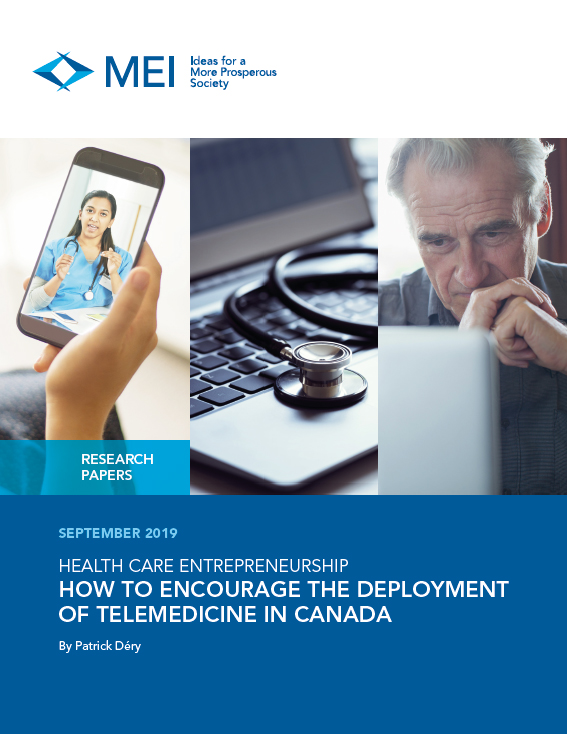Obstacles keep Canadians from benefiting from telemedicine

Montreal, September 19, 2019 – The technologies behind telemedicine are available, and more Canadians could receive remote care, at home or at work, thereby saving themselves trips and avoiding long waits. Unfortunately, our governments are slow to remove obstacles that prevent patients from benefiting from virtual consultations, and doctors from providing this care, shows a publication launched today by the MEI. Only 1% of Canadians use virtual care.
“We communicate with our loved ones or with strangers on the other side of the planet. We carry out secure banking transactions online with a few clicks. But virtual consultations with a doctor or a nurse are non-existent for the very large majority of Canadians,” explains Patrick Déry, Senior Associate Analyst at the MEI and author of the study. “For most of us, a medical visit still represents long hours of waiting and a workday lost.”
An example of an obstacle: A doctor who provides care to people located in a certain province must hold a licence to practise in that province, even if he already holds a licence from another province. Yet more and more Canadian companies are offering their employees access to virtual consultations through their group insurance plans. A doctor who provides such a consultation could easily renew a prescription for an Alberta patient, follow up with another from Manitoba suffering from a chronic illness, and direct a Quebec patient to a consultation with a specialist, all without leaving his or her office.
“The anatomy of Canadians does not vary a lot from province to province! If doctors are available elsewhere to give us a hand, even just temporarily, why not welcome them with open arms? We are currently depriving ourselves of an additional contribution that would help both patients and our overcrowded public systems,” adds the author.
The provincial governments have also set out several conditions that restrict access to telemedicine within the public systems, which is often reserved for patients who live in remote regions or who suffer from particular conditions. The way we pay doctors doesn’t help either. Fee-for-service payments, which represent around three-quarters of Canadian doctors’ incomes, do not encourage them to carry out actions for which there will be no payment, and do not favour innovation in the practise of medicine.
“There are also many situations in which nurses and pharmacists could lend a hand, both in virtual practice and in conventional practice. Allowing them to do more would liberate doctors, a scarce resource, to do other things,” says Mr. Déry.
Numerous studies have shown that telemedicine is reliable, practical, and effective, and that it could be useful for a large share of our daily health concerns. It’s time to move into the 21st century, and governments should put all of their energy into eliminating the barriers that remain and that prevent many Canadians from enjoying the benefits of telemedicine.
The Research Paper entitled Health Care Entrepreneurship – How to Encourage the Deployment of Telemedicine in Canada was prepared by Patrick Déry, Senior Associate Analyst at the MEI. This publication is available on our website.
* * *
The MEI is an independent public policy think tank. Through its publications and media appearances, the MEI stimulates debate on public policies in Quebec and across Canada by proposing reforms based on market principles and entrepreneurship.
-30-
Interview requests: Pascale Déry, Vice President, Communications and Development, MEI. Tel.: 514-273-0969 ext. 2233 / Cell: 514-502-6757 / Email: pdery@iedm.org

